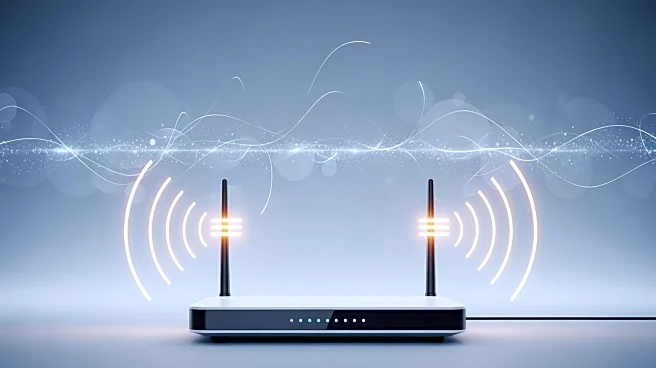What's Happening?
The demand for symmetrical internet speeds is increasing as more Americans experience unreliable internet service with uneven speeds. Symmetrical internet speeds offer equal upload and download rates, addressing the bottleneck issues caused by traditional
asymmetrical connections. This shift is driven by the evolving internet usage patterns, where activities like video calls, cloud backups, and remote work require robust upload capabilities. A recent survey highlighted that over half of Americans have seen their internet bills rise while dealing with poor service, underscoring the need for symmetrical speeds. As internet habits change, symmetrical speeds are becoming essential for a balanced and efficient online experience.
Why It's Important?
The importance of symmetrical internet speeds lies in their ability to support modern digital activities that require high upload bandwidth. Remote workers, gamers, content creators, and smart home enthusiasts are among those who benefit from symmetrical speeds, as these activities involve significant data uploading. The shift towards two-way internet usage, where data is sent as frequently as it is received, makes upload speed crucial for maintaining a reliable connection. Symmetrical speeds can prevent issues like choppy video calls and slow file uploads, enhancing productivity and user experience. As more consumers engage in upload-heavy tasks, symmetrical speeds are becoming a necessity rather than a luxury.
What's Next?
For those considering an upgrade to symmetrical internet speeds, the next step involves evaluating local internet providers and their offerings. Fiber-optic internet, which supports symmetrical speeds, is not universally available and may come at a higher cost. Consumers should assess their current internet usage and determine if the benefits of symmetrical speeds justify the potential price increase. Running speed tests can help identify if upload speeds are a bottleneck in their current setup. As internet usage continues to evolve, more providers may expand their symmetrical speed offerings, making it more accessible to a broader audience.
Beyond the Headlines
The transition to symmetrical internet speeds reflects broader changes in digital communication and data consumption. As homes become more connected and reliant on cloud services, the demand for efficient data transfer grows. This shift may influence internet infrastructure development, pushing providers to enhance their networks to accommodate symmetrical speeds. Additionally, the increased focus on upload capabilities could drive innovation in internet technology, potentially leading to new solutions for optimizing data flow. The cultural shift towards active digital participation highlights the need for internet services that support dynamic and interactive online experiences.













